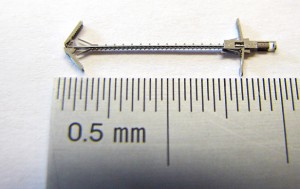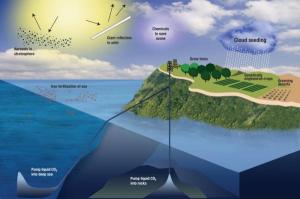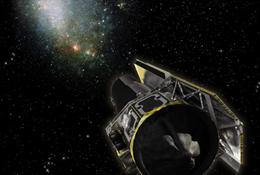Agriculture Update: Genetically Modified Sheep Produce the Right Fat
That is if you are convinced by the recent announcement from researchers in China who have been working with sheep to produce healthier meat alternatives for Chinese consumers. In support of this effort the Beijing Genomics Institute in Shenzhen has created genetically modified sheep by introducing a gene into a donor cell. The gene is linked to the natural production of polyunsaturated fatty acids.
The donor – Chinese Merino sheep.
The gene – from a roundworm, C. elegans.
The fat that this modified sheep produces is like the fat in nuts, seeds, leafy greens and fish. Lots of testing is planned before this new variety of sheep gets introduced for human consumption.
Genetically modified or GM foods are labelled transgenic. Most countries to date have concerns about the safety of such food products.

Biomedicine Update: Tiny Robots Make Beating Heart Operations Safer
Boston Children’s Hospital has developed a new set of cardiac surgical robotic tools. They are millimeters in size and can be deployed through small incisions using a curved-metal-tube.
Current minimally invasive surgery uses catheters for implanting valves, stents and butterfly clamps for closing holes in the septum, the central wall that separates the chambers of the heart. But catheters don’t give surgeons any feedback when exerting force during a procedure.
These new millimeter-scaled robots containing tiny gears, chains and pulleys (see the image below), on the other hand, do. In addition to hole closures micro-robots have been developed for excising heart tissue that is impeding heart function. The robotic devices are being perfected using animal studies before deployment in the hospital’s surgical suite.

Geo-engineering Update – Consequences When Compensating for Global Warming
Researchers studying how to reduce sunlight in an atmosphere richer in carbon dioxide (CO2) to mitigate the greenhouse effect have created models that demonstrate geo-engineering isn’t easy.
The models attempted to:
- Mimick the effects of a large volcanic eruption through the release into the atmosphere of large amounts of sulphur dioxide.
- Deploy giant space mirrors to reflect sunlight away from the atmosphere.
In the model the hypothetical scenario had four times the CO2 of our pre-Industrial atmosphere. The results saw an overall global decrease in rainfall. The decline was 15%, approximately 100 millimeters (around 4 inches) per year in much of North America and northern Eurasia. In the Amazon of central South America rainfall decline by more than 20%.
Although the climate model was not intended to reflect an actual geo-engineering project, decrease in rainfall was not an expected result because previous climate models designed to deflect sunlight indicated increased crop yields through increased cloud cover and precipitation.
The study did not focus on ocean acidification resulting from the release of significant amounts of sulfur dioxide.

Space Update: Australian National University to test Plasma Rocket Designs
The Mount Stromolo Observatory in Australia is to be home to a Space Plasma Power and Propulsion Laboratory that will look at using fuel other than noble gases like xenon as a power source for plasma rockets.
The ability to use any type of propellant makes plasma rocket technology far more flexible, liberating it from reliance on expensive fuels. The plasma thruster and testing facility should be in place by the middle of 2013.
If you are unfamiliar with plasma rocket technology please read the content of one of the more recent blogs on this site looking at new rocket propulsion technologies.

Transportation Update: Commercial Sub-orbital Flight Services on the Horizon
Last week’s successful conclusion of the Falcon 9 launch of Dragon and its docking and return from the International Space Station has had interesting consequences for Earth-bound travellers. Suddenly there is renewed interest in sub-orbital flights to cut down the time it takes to fly between remote destinations here on Earth. Hypersonic sub-orbital flights between Sydney, Australia and New York will soon be within our reach say the pundits. And venture capitalists are taking a renewed interest in what is seen as the next phase in the development of commercial aviation.
Virgin Galactic is one of a number of companies that plan to offer these types of terrestrial flights taking as little as an hour to connect travellers to major commercial destinations. Virgin already has a list of over 500 passengers signed up for its sub-orbital tourist flights including celebrities like Ashton Kutcher.










